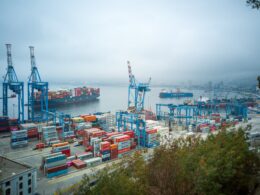Recently, The Chartered Institute of Procurement and Supply (CIPS) announced via a survey that, out of 465 supply chain professionals, 45% felt that they were not fully equipped with the relevant skills by their employer. A quite worrying statistic considering that 60% of those same specialists didn’t even feel their job was respected.
The supply chain manager is the overseer, the person who is supposed to see it from beginning to end. They are supposed to be able to identify mismanagements within the chain, be motivated to reduce costs, and contribute to business growth. Yet, with the profession being seen as ‘unattractive’ – this doesn’t really seem to be happening. So, whilst changes are no doubt on the way off the back of this survey, are there any simple ways to optimise a supply chain? Well, as it turns out, there are – and here are five of them.
- Reliable packaging
Recently, packaging in general has seen somewhat of a radical change with businesses actively trying to reduce their carbon footprint. However, good old, plain and simple, packaging that is simply reliable is often overlooked. By optimising your packaging stock to include different sizes for different occasions, that safely secure the products inside, and are optimised for transportation across country and oversees – your supply chain will start to gain a reputation for reliability and efficiency. Put the customer first: if you deliver them a package that is damaged, why would they use you again?
Additionally, it’s not all about the customer. The supply chain starts at the warehouse, therefore storage needs to be factored into what can be considered as ‘reliable packaging’, as does waste disposal, and cost efficiency in terms of where you source the raw materials to produce, for example, cardboard boxes. By optimising each factor here, the job of a supply chain manager becomes so much easier: they can trust the materials they are working with.
- Sustainability
Following on from finding the most suitable packaging materials, we come to the increasingly popular notion of sustainability. Having packaging that is energy efficient, and goes through a production process that can lower manufacturing temperatures are sure-fire ways to enhance the supply chain: they not only reduce costs, but also improve customer relationships. A great example of this comes in the form of the normally un-recyclable pizza box. They are made out of a material that are easy to make and easy to recycle: corrugated cardboard. However, when grease touches it, you cannot recycle it. To get around this, some companies have started producing compostable boxes – this not only provides the customer with reliable packaging, but also shows a keenness to improve and adapt. Having this type of innovation within a supply chain will keep it fresh and up to speed with an ever-evolving packaging market.
- Choosing the right 3rd party logistics company
With the packaging world now a global industry, the need to outsource to 3PLC’s who provide dynamic solutions to international delivery problems are very hard to come by. In fact, so much so that they can be very aggressive with their pricing, leading people to walk away from them mid-contract. Additionally, over-the-odds pricing supplemented with second-rate services are a common disaster in this industry. So, choosing the right 3PLC takes time. If you envision your supply chain to be an authority in reliability, sustainability, and efficiency, then you have to look for a 3PLC who share those same values. They will need the right infrastructure, too, and the capability to meet your needs in both IT and numbers to keep in tandem with you. There are many factors to consider when choosing a 3PLC – they effectively represent you as a company, therefore choose wisely.
- Scenario drills
A common method of practice used by UPS is running various scenarios over and over again, educating staff to the point where they will have the knowledge to deal with a problem should it arise. This point, essentially, stems back to UK supply chain managers not having enough training – some have no idea what to do when something goes wrong. By implementing this ‘hands on’ training, staff will learn by doing. Furthermore, the scenarios don’t have to be limited to just problem solving. They can include cost comparisons, improvement ideas, and supply chain network changes. By conducting these, you can rationalise what is and what isn’t efficient for your supply chain. Like sustainability, it comes down to evolution and adaptability. If you don’t adapt to the current market, which you could argue at the moment is ‘customer convenience’, then you could get left behind.
- Improve trading relationships
This is a fundamental part of negotiation that we are seeing less and less of. Contract renewals with 3PLC’s are rare, and this inconsistency is damaging the fluency of supply chains. Any kind of contract has to be managed – it can’t be left by the wayside to run its course, otherwise what is the point? By managing it with care, the parties involved might come to a more beneficial agreement, trust will develop, costs can come down, and they will know how each other work. It’s a negotiation skill that is lost upon supply chain managers – indeed, going back to the survey conducted by CIPS, it was found that only 7% were motivated by driving a hard bargain, and only 48% were motivated to contribute to business growth. These statistics could show that they just don’t particularly care about managing existing relationships, and perhaps it’s because they aren’t trained adequately enough to do so.
So, what can we draw from these five points? Well, it comes down to training the supply chain managers to do more. Having eyes and ears on the ground that are well-equipped to deal with the entire process, start to finish, will significantly improve supply chains – each problem seems to stem from this, whether it be poor man-management, poor negotiation, or a lack of innovative minds.
Barney Byfield
Davpack MD













